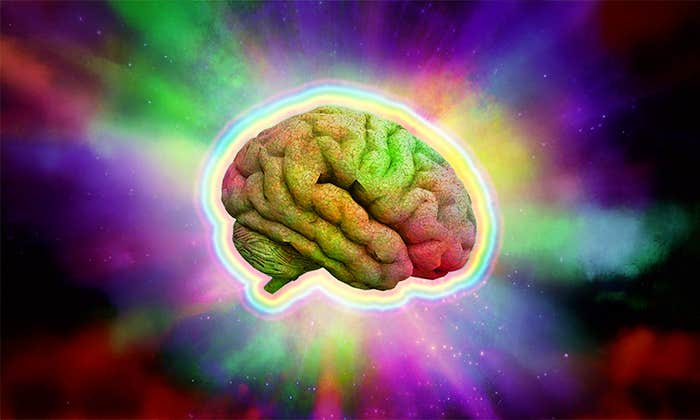Early in my neurology residency, a 50-year-old woman insisted on being hospitalized for protection from the FBI spying on her via the TV set in her bedroom. The woman’s physical examination, lab tests, EEGs, scans, and formal neuropsychological testing revealed nothing unusual. Other than being visibly terrified of the TV monitor in the ward solarium, she had no other psychiatric symptoms or past psychiatric history. Neither did anyone else in her family, though she had no recollection of her mother, who had died when the patient was only 2.
The psychiatry consultant favored the early childhood loss of her mother as a potential cause of a mid-life major depressive reaction. The attending neurologist was suspicious of an as yet undetectable degenerative brain disease, though he couldn’t be more specific. We residents were equally divided between the two possibilities.
Fortunately an intern, a super-sleuth more interested in data than speculation, was able to locate her parents’ death certificates. The patient’s mother had died in a state hospital of Huntington’s disease—a genetic degenerative brain disease. (At that time such illnesses were often kept secret from the rest of the family.) Case solved. The patient was a textbook example of psychotic behavior preceding the cognitive decline and movement disorders characteristic of Huntington’s disease.

As a fledgling neurologist, I’d already seen a wide variety of strange mental states arising out of physical diseases. But on this particular day, I couldn’t wrap my mind around a gene mutation generating an isolated feeling of being spied on by the FBI. How could a localized excess of amino acids in a segment of DNA be transformed into paranoia?
Though I didn’t know it at the time, I had run headlong into the “hard problem of consciousness,” the enigma of how physical brain mechanisms create purely subjective mental states. In the subsequent 50 years, what was once fodder for neurologists’ late night speculations has mushroomed into the pre-eminent question in the philosophy of mind. As an intellectual challenge, there is no equal to wondering how subatomic particles, mindless cells, synapses, and neurotransmitters create the experience of red, the beauty of a sunset, the euphoria of lust, the transcendence of music, or in this case, intractable paranoia.
I couldn’t wrap my mind around a gene mutation generating an isolated feeling of being spied on by the FBI.
Neuroscientists have long known which general areas of the brain and their connections are necessary for the state of consciousness. By observing both the effects of localized and generalized brain insults such as anoxia and anesthesia, none of us seriously doubt that consciousness arises from discrete brain mechanisms. Because these mechanisms are consistent with general biological principles, it’s likely that, with further technical advances, we will uncover how the brain generates consciousness.
However, such knowledge doesn’t translate into an explanation for the what of consciousness—that state of awareness of one’s surroundings and self, the experience of one’s feelings and thoughts. Imagine a hypothetical where you could mix nine parts oxytocin, 17 parts serotonin, and 11 parts dopamine into a solution that would make 100 percent of people feel a sense of infatuation 100 percent of the time. Knowing the precise chemical trigger for the sensation of infatuation (the how) tells you little about the nature of the resulting feeling (the what).
Over my career, I’ve gathered a neurologist’s working knowledge of the physiology of sensations. I realize neuroscientists have identified neural correlates for emotional responses. Yet I remain ignorant of what sensations and responses are at the level of experience. I know the brain creates a sense of self, but that tells me little about the nature of the sensation of “I-ness.” If the self is a brain-generated construct, I’m still left wondering who or what is experiencing the illusion of being me. Similarly, if the feeling of agency is an illusion, as some philosophers of mind insist, that doesn’t help me understand the essence of my experience of willfully typing this sentence.
Slowly, and with much resistance, it’s dawned on me that the pursuit of the nature of consciousness, no matter how cleverly couched in scientific language, is more like metaphysics and theology. It is driven by the same urges that made us dream up gods and demons, souls and afterlife. The human urge to understand ourselves is eternal, and how we frame our musings always depends upon prevailing cultural mythology. In a scientific era, we should expect philosophical and theological ruminations to be couched in the language of physical processes. We argue by inference and analogy, dragging explanations from other areas of science such as quantum physics, complexity, information theory, and math into a subjective domain. Theories of consciousness are how we wish to see ourselves in the world, and how we wish the world might be.
My first hint of the interaction between religious feelings and theories of consciousness came from Montreal Neurological Institute neurosurgeon Wilder Penfield’s 1975 book, Mystery of the Mind: A Critical Study of Consciousness and the Human Brain. One of the great men of modern neuroscience, Penfield spent several decades stimulating the brains of conscious, non-anesthetized patients and noting their descriptions of the resulting mental states, including long-lost bits of memory, dreamy states, deju vu, feelings of strangeness, and otherworldliness. What was most startling about Penfield’s work was his demonstration that sensations that normally qualify how we feel about our thoughts can occur in the absence of any conscious thought. For example, he could elicit feelings of familiarity and strangeness without the patient thinking of anything to which the feeling might apply. His ability to spontaneously evoke pure mental states was proof positive that these states arise from basic brain mechanisms.
And yet, here’s Penfield’s conclusion to his end-of-career magnum opus on the nature of the mind: “There is no good evidence, in spite of new methods, that the brain alone can carry out the work that the mind does.” How is this possible? How could a man who had single-handedly elicited so much of the fabric of subjective states of mind decide that there was something to the mind beyond what the brain did?
In the last paragraph of his book, Penfield explains, “In ordinary conversation, the ‘mind’ and ‘the spirit of man’ are taken to be the same. I was brought up in a Christian family and I have always believed, since I first considered the matter … that there is a grand design in which all conscious individuals play a role … Since a final conclusion … is not likely to come before the youngest reader of this book dies, it behooves each one of us to adopt for himself a personal assumption (belief, religion), and a way of life without waiting for a final word from science on the nature of man’s mind.”
Front and center is Penfield’s observation that, in ordinary conversation, the mind is synonymous with the spirit of man. Further, he admits that, in the absence of scientific evidence, all opinions about the mind are in the realm of belief and religion. If Penfield is even partially correct, we shouldn’t be surprised that any theory of the “what” of consciousness would be either intentionally or subliminally infused with one’s metaphysics and religious beliefs.
To see how this might work, take a page from Penfield’s brain stimulation studies where he demonstrates that the mental sensations of consciousness can occur independently from any thought that they seem to qualify. For instance, conceptualize thought as a mental calculation and a visceral sense of the calculation. If you add 3 + 3, you compute 6, and simultaneously have the feeling that 6 is the correct answer. Thoughts feel right, wrong, strange, beautiful, wondrous, reasonable, far-fetched, brilliant, or stupid. Collectively these widely disparate mental sensations constitute much of the contents of consciousness. But we have no control over the mental sensations that color our thoughts. No one can will a sense of understanding or the joy of an a-ha! moment. We don’t tell ourselves to make an idea feel appealing; it just is. Yet these sensations determine the direction of our thoughts. If a thought feels irrelevant, we ignore it. If it feels promising, we pursue it. Our lines of reasoning are predicated upon how thoughts feel.

Shortly after reading Penfield’s book, I had the good fortune to spend a weekend with theoretical physicist David Bohm. Bohm took a great deal of time arguing for a deeper and interconnected hidden reality (his theory of implicate order). Though I had difficulty following his quantum theory-based explanations, I vividly remember him advising me that the present-day scientific approach of studying parts rather than the whole could never lead to any final answers about the nature of consciousness. According to him, all is inseparable and no part can be examined in isolation.
In an interview in which he was asked to justify his unorthodox view of scientific method, Bohm responded, “My own interest in science is not entirely separate from what is behind an interest in religion or in philosophy—that is to understand the whole of the universe, the whole of matter, and how we originate.” If we were reading Bohm’s argument as a literary text, we would factor in his Jewish upbringing, his tragic mistreatment during the McCarthy era, the lack of general acceptance of his idiosyncratic take on quantum physics, his bouts of depression, and the close relationship between his scientific and religious interests.
Many of today’s myriad explanations for how consciousness arises are compelling. But once we enter the arena of the nature of consciousness, there are no outright winners.
Christof Koch, the chief scientific officer of the Allen Institute for Brain Science in Seattle, explains that a “system is conscious if there’s a certain type of complexity. And we live in a universe where certain systems have consciousness. It’s inherent in the design of the universe.”
If the self is a brain-generated construct, I’m left wondering who or what is experiencing the illusion of being me.
According to Daniel Dennett, professor of philosophy at Tufts University and author of Consciousness Explained and many other books on science and philosophy, consciousness is nothing more than a “user-illusion” arising out of underlying brain mechanisms. He argues that believing consciousness plays a major role in our thoughts and actions is the biological equivalent of being duped into believing that the icons of a smartphone app are doing the work of the underlying computer programs represented by the icons. He feels no need to postulate any additional physical component to explain the intrinsic qualities of our subjective experience.
Meanwhile, Max Tegmark, a theoretical physicist at the Massachusetts Institute of Technology, tells us consciousness “is how information feels when it is being processed in certain very complex ways.” He writes that “external reality is completely described by mathematics. If everything is mathematical, then, in principle, everything is understandable.” Rudolph E. Tanzi, a professor of neurology at Harvard University, admits, “To me the primal basis of existence is awareness and everything including ourselves and our brains are products of awareness.” He adds, “As a responsible scientist, one hypothesis which should be tested is that memory is stored outside the brain in a sea of consciousness.”
Each argument, taken in isolation, seems logical, internally consistent, yet is at odds with the others. For me, the thread that connects these disparate viewpoints isn’t logic and evidence, but their overall intent. Belief without evidence is Richard Dawkins’ idea of faith. “Faith is belief in spite of, even perhaps because of, the lack of evidence.” These arguments are best read as differing expressions of personal faith.
For his part, Dennett is an outspoken atheist and fervent critic of the excesses of religion. “I have absolutely no doubt that secular and scientific vision is right and deserves to be endorsed by everybody, and as we have seen over the last few thousand years, superstitious and religious doctrines will just have to give way.” As the basic premise of atheism is to deny that for which there is no objective evidence, he is forced to avoid directly considering the nature of purely subjective phenomena. Instead he settles on describing the contents of consciousness as illusions, resulting in the circularity of using the definition of mental states (illusions) to describe the general nature of these states.
We have no control over the mental sensations that color our thoughts. No one can will the joy of an a-ha! moment.
The problem compounds itself. Dennett is fond of pointing out (correctly) that there is no physical manifestation of “I,” no ghost in the machine or little homunculus that witnesses and experiences the goings on in the brain. If so, we’re still faced with asking what/who, if anything, is experiencing consciousness? All roads lead back to the hard problem of consciousness.
Though tacitly agreeing with those who contend that we don’t yet understand the nature of consciousness, Dennett argues that we are making progress. “We haven’t yet succeeded in fully conceiving how meaning could exist in a material world … or how consciousness works, but we’ve made progress: The questions we’re posing and addressing now are better than the questions of yesteryear. We’re hot on the trail of the answers.”
By contrast, Koch is upfront in correlating his religious upbringing with his life-long pursuit of the nature of consciousness. Raised as a Catholic, he describes being torn between two contradictory views of the world—the Sunday view reflected by his family and church, and the weekday view as reflected in his work as a scientist (the sacred and the profane).
In an interview with Nautilus, Koch said, “For reasons I don’t understand and don’t comprehend, I find myself in a universe that had to become conscious, reflecting upon itself.” He added, “The God I now believe in is closer to the God of Spinoza than it is to Michelangelo’s paintings or the God of the Old Testament, a god that resides in this mystical notion of all-nothingness.” Koch admitted, “I’m not a mystic. I’m a scientist, but this is a feeling I have.” In short, Koch exemplifies a truth seldom admitted—that mental states such as a mystical feeling shape how one thinks about and goes about studying the universe, including mental states such as consciousness.
Both Dennett and Koch have spent a lifetime considering the problem of consciousness; though contradictory, each point of view has a separate appeal. And I appreciate much of Dennett and Koch’s explorations in the same way that I can mull over Aquinas and Spinoza without necessarily agreeing with them. One can enjoy the pursuit without believing in or expecting answers. After all these years without any personal progress, I remain moved by the essential nature of the quest, even if it translates into Sisyphus endlessly pushing his rock up the hill.
The spectacular advances of modern science have generated a mindset that makes potential limits to scientific inquiry intuitively difficult to grasp. Again and again we are given examples of seemingly insurmountable problems that yield to previously unimaginable answers. Just as some physicists believe we will one day have a Theory of Everything, many cognitive scientists believe that consciousness, like any physical property, can be unraveled. Overlooked in this optimism is the ultimate barrier: The nature of consciousness is in the mind of the beholder, not in the eye of the observer.
It is likely that science will tell us how consciousness occurs. But that’s it. Although the what of consciousness is beyond direct inquiry, the urge to explain will persist. It is who we are and what we do.
Robert A. Burton, a former chief of neurology at the University of California, San Francisco, Medical Center at Mount Zion, is the author of On Being Certain: Believing You Are Right Even When You’re Not, and A Skeptic’s Guide to the Mind: What Neuroscience Can and Cannot Tell Us About Ourselves.
Lead collage credits: aleroy4 / Getty images; SpeedKingz / shutterstock


























